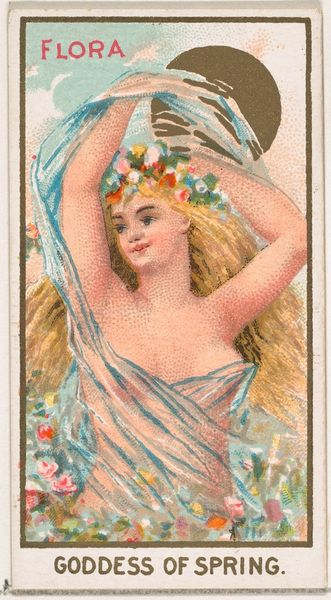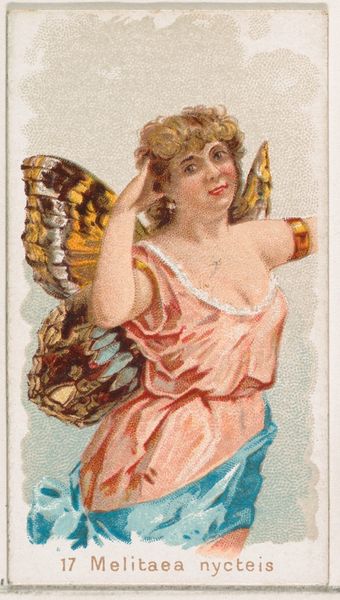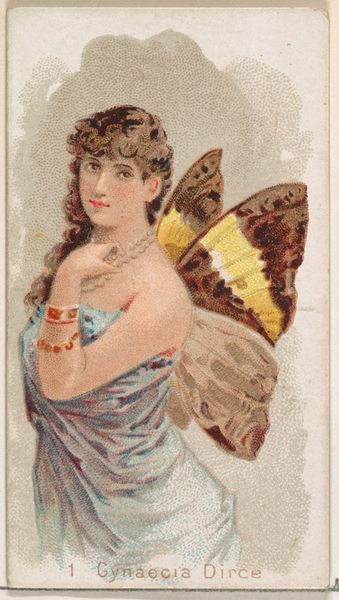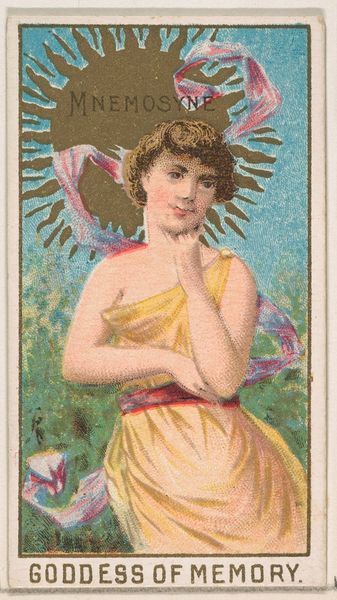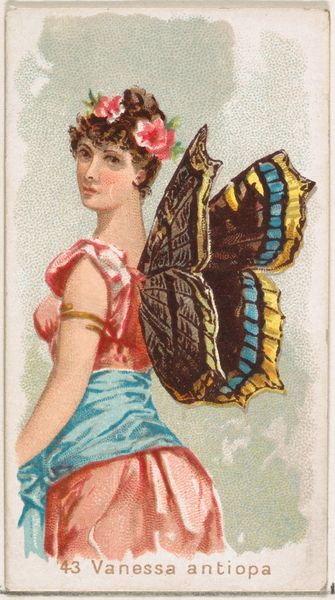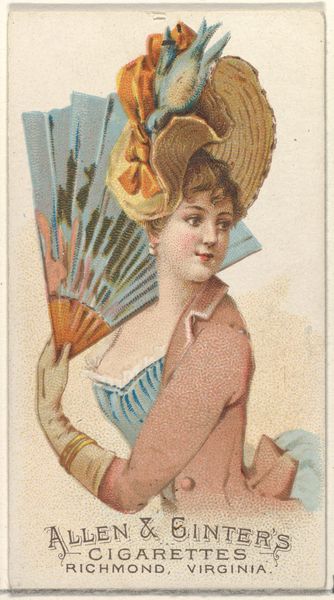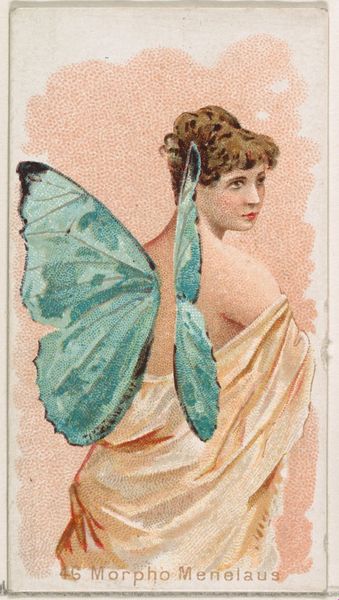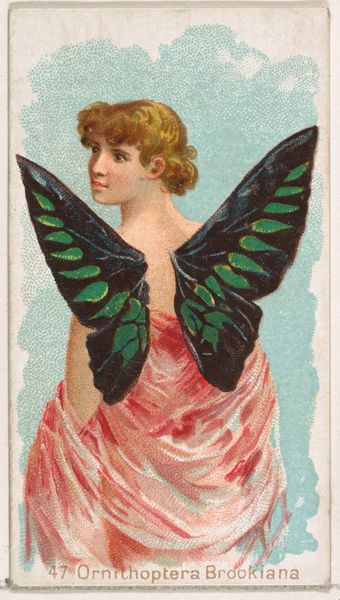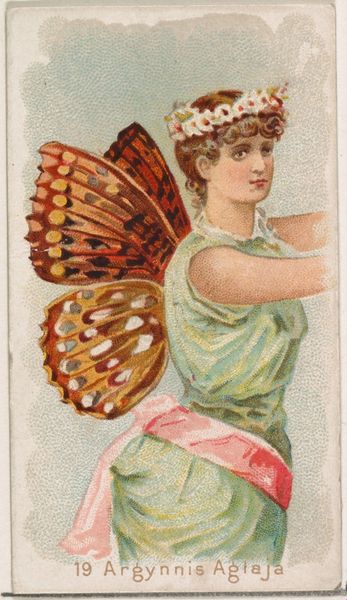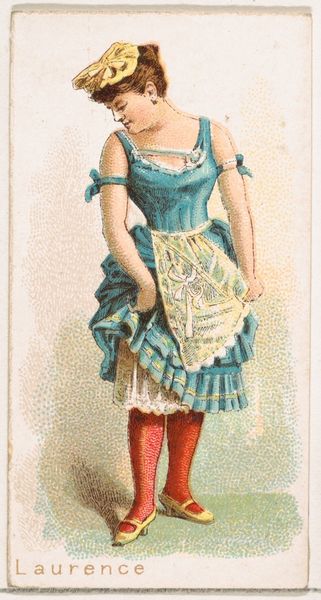
From the Girls and Children series (N58) promoting Our Little Beauties Cigarettes for Allen & Ginter brand tobacco products 1887
0:00
0:00
drawing, coloured-pencil, print
#
portrait
#
drawing
#
coloured-pencil
#
girl
# print
#
figuration
#
coloured pencil
#
genre-painting
#
portrait art
Dimensions: Sheet: 2 5/8 × 1 1/2 in. (6.7 × 3.8 cm)
Copyright: Public Domain
Curator: This captivating image hails from 1887, part of Allen & Ginter's "Girls and Children" series promoting their "Our Little Beauties" cigarettes. It is currently held at the Metropolitan Museum of Art. The medium involves drawing and coloured-pencil on print, so this image, like many others was mechanically produced on a large scale. Editor: What strikes me immediately is this feeling of staged innocence, a calculated visual language portraying children in a specific light. The choice of green and gold creates this rather odd theatrical aura, almost fairy-like in appearance. It reminds me of how female figures in pre-Raphaelite paintings are positioned as both objects of adoration and innocence. Curator: Precisely, the cultural context is key. These were trade cards, intended to be collected. Think about the means of production – the mass printing, the labor involved, the appeal to a wide audience – and you see how tobacco companies skillfully used images of children to promote their product. It’s the intersection of child imagery, advertising, and the social acceptability of tobacco consumption that's so unsettling here. The materiality of these images is equally interesting: cardstock meant for wide distribution not fine art paper. Editor: Absolutely. The symbolism here is thick. Green has historically represented both envy and growth. The choice of ‘Our Little Beauties’ combined with the depiction of this rather dreamy girl becomes problematic considering the advertisement is for tobacco. I read that combination of text and figure to imply premature indulgence and possibly early loss of innocence. It’s also worth thinking about why fairy-like costumes may appeal to tobacco buyers and what that represents regarding contemporary visual tropes for women. Curator: These cards were strategically placed in cigarette packs, directly linking consumption and visual pleasure. We must challenge our notions of artistic value: these commercial prints utilized artistic skill, even if anonymously, to build powerful brand identities. What does that suggest regarding the nature of artistic labour itself? The trade card serves as a small index for late 19th-century popular culture and raises bigger questions about consumption, artistic value, and class in that period. Editor: True, seeing through these layers changes how we perceive such pieces. It makes me wonder, are we interpreting an artistic object, an advertisement, or a cultural artifact? In the end, they're really inseparable aren't they.
Comments
No comments
Be the first to comment and join the conversation on the ultimate creative platform.
